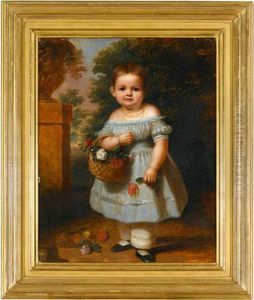G. W. Conarroe Paintings
George W. Conarroe was an American artist, primarily known for his landscape paintings and etchings. Born in 1824 in the United States, Conarroe developed a passion for the arts at an early age. However, little is known about his early life and training, which is common for many artists of the 19th century whose lives were not well-documented.
Conarroe's works reflect the Hudson River School style, which was prominent in American art during the mid-19th century. This movement was characterized by its romantic portrayal of the American landscape, emphasizing the beauty and grandeur of the country's wilderness. Although Conarroe was not as prominent as the leading figures of this movement, such as Thomas Cole or Frederic Edwin Church, his works still contributed to the American art scene of the time, capturing the essence of the natural environment.
During his lifetime, Conarroe exhibited his works at various institutions, such as the Pennsylvania Academy of the Fine Arts. His etchings and paintings often depicted the serene countryside, pastoral scenes, and occasionally historic structures, reflecting a nostalgic appreciation for the American past. Conarroe's artistic output was part of the larger cultural context of the United States during a period of rapid change and modernization.
George W. Conarroe passed away in 1909. While he may not be as widely recognized as other artists from his era, his contributions to the landscape genre remain a part of the rich tapestry of American art history. His works continue to be appreciated by collectors and historians who have an interest in the Hudson River School and its impact on the development of American art.
